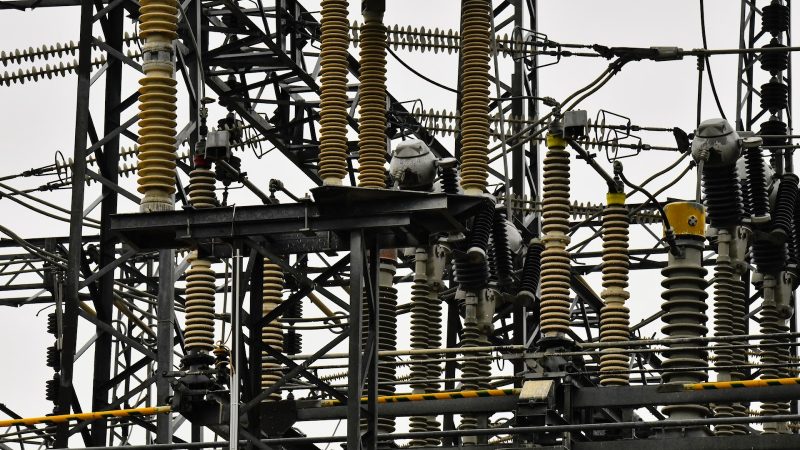Terminal tractor market key drivers, Restraints & Challenges

The main purpose of terminal tractors is spotting tractors, and yard trucks, transport semi-trailers inside a cargo yard and warehouse. They are primarily used for loading and unloading commodities, frequently used in port operations.
The market for terminal tractors will grow at a strong CAGR of 4.23%, from a value of $723.15 million in 2021 to $1049.93 million in 2030.
In seaports, terminal tractors are primarily utilized for material handling activities, including loading and unloading cargo. The adoption of Terminal Tractors is greatly aided by their quick turnaround time, cheap running costs, exceptional mobility, distinctive comfort, and readily accessible repair sites. Additionally, there are increasing opportunities for makers of Terminal Tractors due to the applications of Terminal Tractors in the logistic sector, manufacturing facilities, and industrial sites.
Key Drivers
Growing demands from the e-commerce and logistics sectors are one of the reasons propelling the market for terminal tractors. For instance, the U.S. Census Bureau estimates that the third quarter of 2021 saw a total of USD 204.6 billion in U.S. retail e-commerce sales.
The integration of automation and high-end technologies, as well as technical advancements in the terminal tractor market for improving work proficiency and decreasing human mistakes, will drive the expansion of the worldwide terminal tractor market. For instance, the collaboration between EasyMile and Terberg hopes to produce an autonomous terminal tractor by 2022. The Living Lab Autonomous Transport Zeeland project’s Kloosterboer terminal in Vlissingen, the Netherlands, will host the first autonomous operation pilot.
Restraints & Challenges
One of the biggest problems for the Terminal Tractor business is the lack of qualified operators. The operation of Terminal Tractors necessitates extensive training and experience because they are sophisticated devices. One of the biggest obstacles to the expansion of the Terminal Tractor business is a lack of competent operators.
Another significant obstacle facing the terminal tractor market is its high ownership cost. Since Terminal Tractors are expensive machinery, many firms may find the cost of ownership to be prohibitive.
Market Segmentation
Fuel Analysis
The diesel market category is anticipated to develop at the quickest rate throughout the projection period. Most terminal tractors are equipped with diesel engines. Additionally, according to fuel, the diesel category contributed the largest market share in 2021. Due to its excellent power efficiency and low cost, diesel is the fuel of choice for equipment producers. The most recent emission limits for NOx, PM, and CO2 reductions, along with the expanding trend of port equipment automation, will compel equipment manufacturers to develop more environmentally friendly, energy-efficient equipment.
Tonnage Insights
with 58% market share 50-100 ton sector held a significant market position in 2021. This is because stacking huge containers at port terminals requires a significant quantity of machinery. Terminal tractors with a tonnage capacity of 50–100 tons are used in the port and logistics industries to transport bulk containers, which can be empty or fully loaded. The international marine trade for goods loaded achieved a volume of 11.08 billion tonnes in 2019, according to the development statistics and information division of the United Nations Conference on Trade and Development (UNCTAD). This resulted from the rising living standards, especially in Asian countries, as well as the rising global population, GDP, disposable income, and living standards overall.
Regional Insights
The highest market share in 2021 belonged to North America. With a 45.8% market share, it is anticipated to dominate the terminal tractor market in 2021. The massive industrial base of the United States, including automotive manufacturing, aerospace, defense, and industrial verticals, is causing the market to grow. Millions of TEU are handled annually by other North American port terminals, including the Southern California ports of Los Angeles and Long Beach, New York’s Maher Terminal, Los Angeles’s WBCT Terminal, and the West Coast’s ITS and Husky Terminals. These terminals’ constantly rising traffic levels present the lucrative commercial potential for terminal tractor manufacturers. Additionally, the U.S. contributed the most to the sales of terminal tractors overall in North America (91%) in 2020.
Key Players
- Terberg Group B.V.
- MAFI Transport-System GmbH
- SANY Group
- Hyster-Yale Group, Inc.
- Kalmar Inc.
- Cargotec
- CVS Ferrari S.p.A.
- REV Group Inc.
- Linde Material Handling
- Konecranes Oyj
The market for terminal tractors will grow at a strong CAGR of 4.23%, from a value of $723.15 million in 2021 to $1049.93 million in 2030. The use of terminal tractors will increase due to technological developments like the electrification of terminal tractors and the integration of the Internet of Things (IoT), as well as a rise in the demand for automation at port terminals, warehouses, and distribution centers. Additionally, the expansion of global trade is influencing consumers to choose terminal tractors to increase productivity and decrease human error. This will open up a wide range of prospects for terminal tractor manufacturers worldwide.






